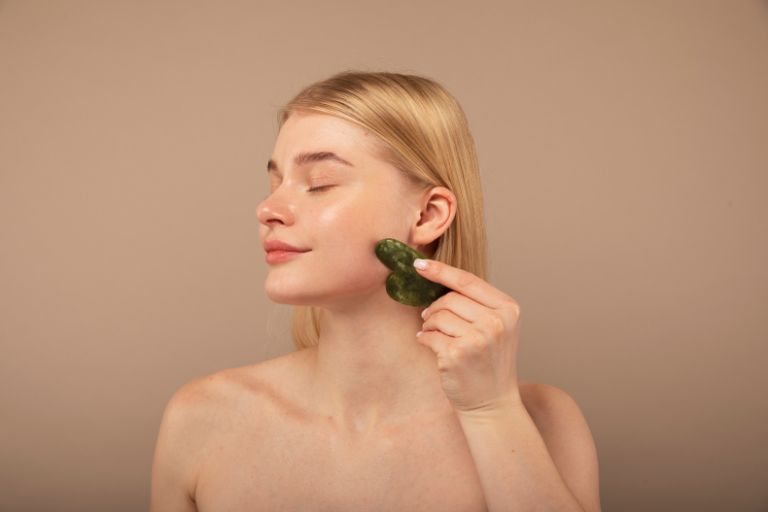The Rise of Gua Sha in Modern Beauty Rituals: Can Gua Sha Replace Botox?
In the quest for youthful, radiant skin, the beauty industry presents a myriad of options, ranging from ancient beauty rituals to modern medical procedures.
Among these, Gua Sha and Botox have emerged as popular choices for those looking to combat the signs of ageing. But is one genuinely superior to the other?
Understanding Gua Sha
Why Gua Sha is Good
Gua Sha is a traditional Chinese medicine technique that involves scraping a flat, smooth tool, often made of jade or rose quartz, across the skin. This method is believed to improve circulation, promote lymphatic drainage, and relieve tension in the muscles.
Advocates of Gua Sha praise its ability to naturally enhance skin's appearance, making it look more vibrant and lifted with regular use.
How Gua Sha Works
The principle behind Gua Sha is simple yet effective. By applying gentle pressure and making sweeping motions along the contours of the face, Gua Sha stimulates blood flow and encourages the movement of lymphatic fluids.
This process can help reduce puffiness, sculpt facial features, and even diminish the appearance of wrinkles and fine lines over time.
Gua Sha vs. Botox
While Gua Sha offers a non-invasive approach to skin health, Botox works by temporarily paralyzing muscles to smooth out wrinkles. Botox, a form of botulinum toxin, is injected into specific areas to block nerve signals to the muscles, preventing them from contracting.
This results in a smoother, more youthful appearance of the skin.
Comparing the Two
The key difference between Gua Sha and Botox lies in their approach and longevity of results. Gua Sha provides a more holistic, gradual improvement in skin texture and firmness without the need for needles or chemicals. It's also seen as a therapeutic ritual that not only benefits the skin but also promotes relaxation and well-being.
Botox, on the other hand, offers immediate results with a more targeted approach to wrinkle reduction. However, its effects are temporary, typically lasting 3 to 6 months, requiring regular touch-ups to maintain the desired appearance.
Additionally, Botox treatments can be costly and come with a risk of side effects, such as bruising, swelling, or even a loss of facial expressions if not administered correctly.
Why Gua Sha is Considered Better than Botox
Choosing between Gua Sha and Botox ultimately depends on personal preferences, goals, and values. However, many are leaning towards Gua Sha for several compelling reasons:
-
Natural and Non-Invasive: Gua Sha is a completely natural, non-invasive method that respects the body's natural healing processes. It doesn't introduce foreign substances into the body, making it a safer alternative for those wary of injections or chemicals.
-
Holistic Benefits: Beyond its aesthetic benefits, Gua Sha is part of a holistic wellness practice. It not only aims to improve skin appearance but also enhances overall well-being through stress reduction and relaxation.
-
Cost-Effective and Sustainable: Gua Sha is a one-time investment in a tool that can be used indefinitely, offering a more sustainable and cost-effective solution compared to the recurring expense of Botox treatments.
-
Empowerment and Self-Care: Engaging in a Gua Sha routine encourages a deeper connection with oneself, promoting a self-care ritual that is both empowering and therapeutic.
While Botox offers a quick fix to ageing signs, Gua Sha presents a gentler, more sustainable approach to skin health and rejuvenation.
Its benefits extend beyond mere aesthetics, touching upon aspects of wellness and self-care that many find invaluable.
As more people seek natural and holistic alternatives to cosmetic procedures, Gua Sha stands out as a compelling choice, proving that sometimes, the best solutions are those that align with nature and the body's inherent capacities for healing and renewal.
Click here to join my FREE 7-Day Gua Sha Challenge, starts 17 March 2024.




